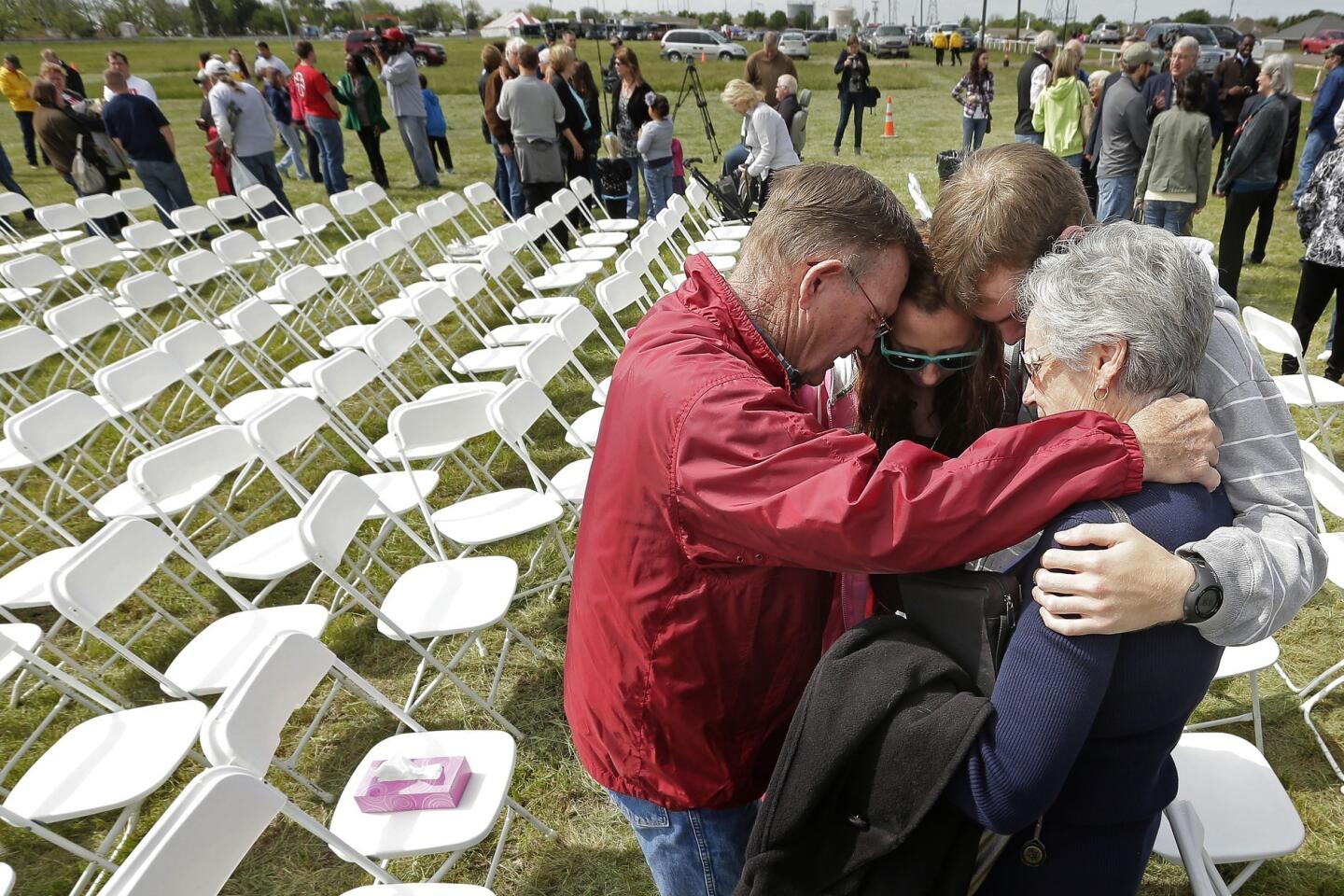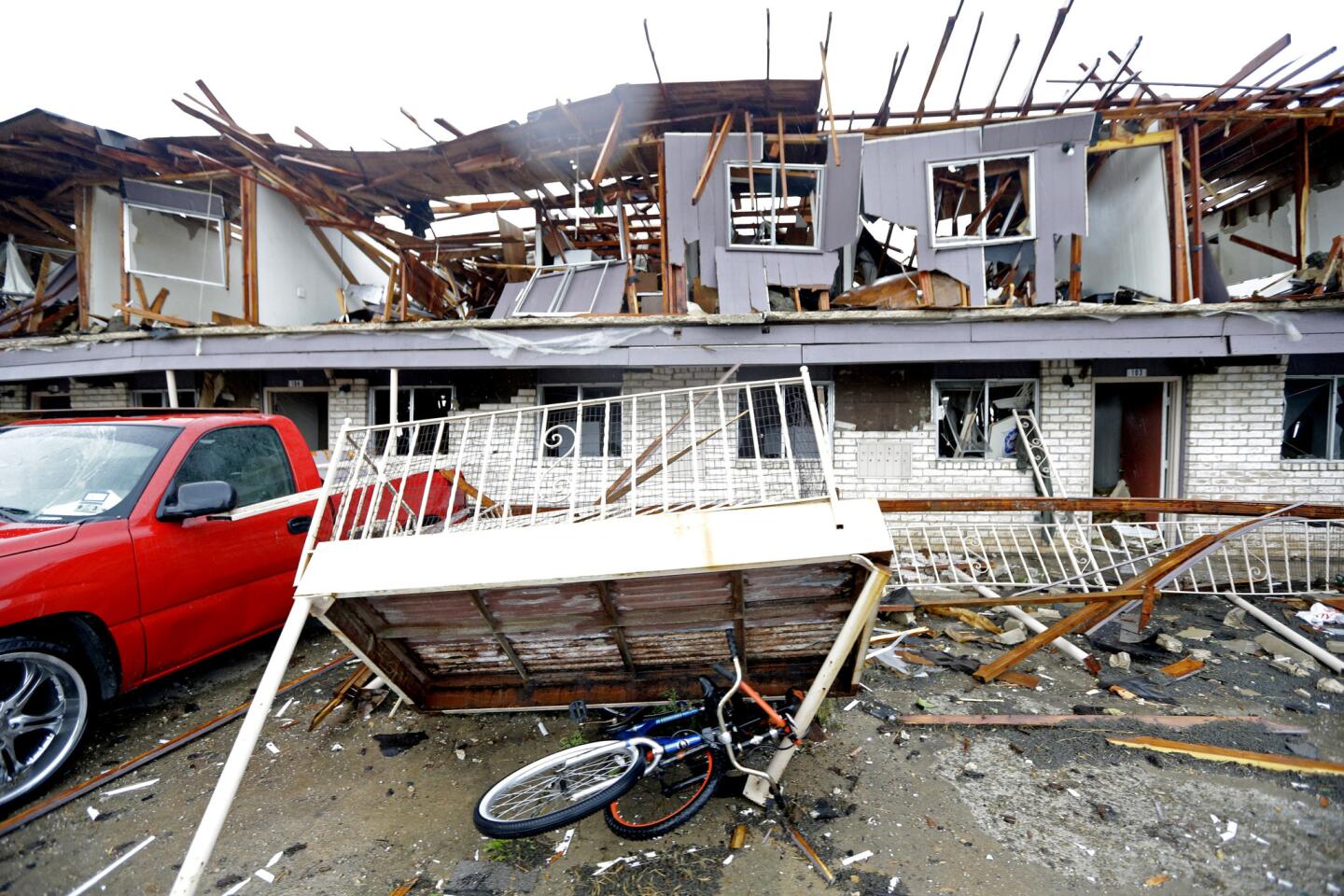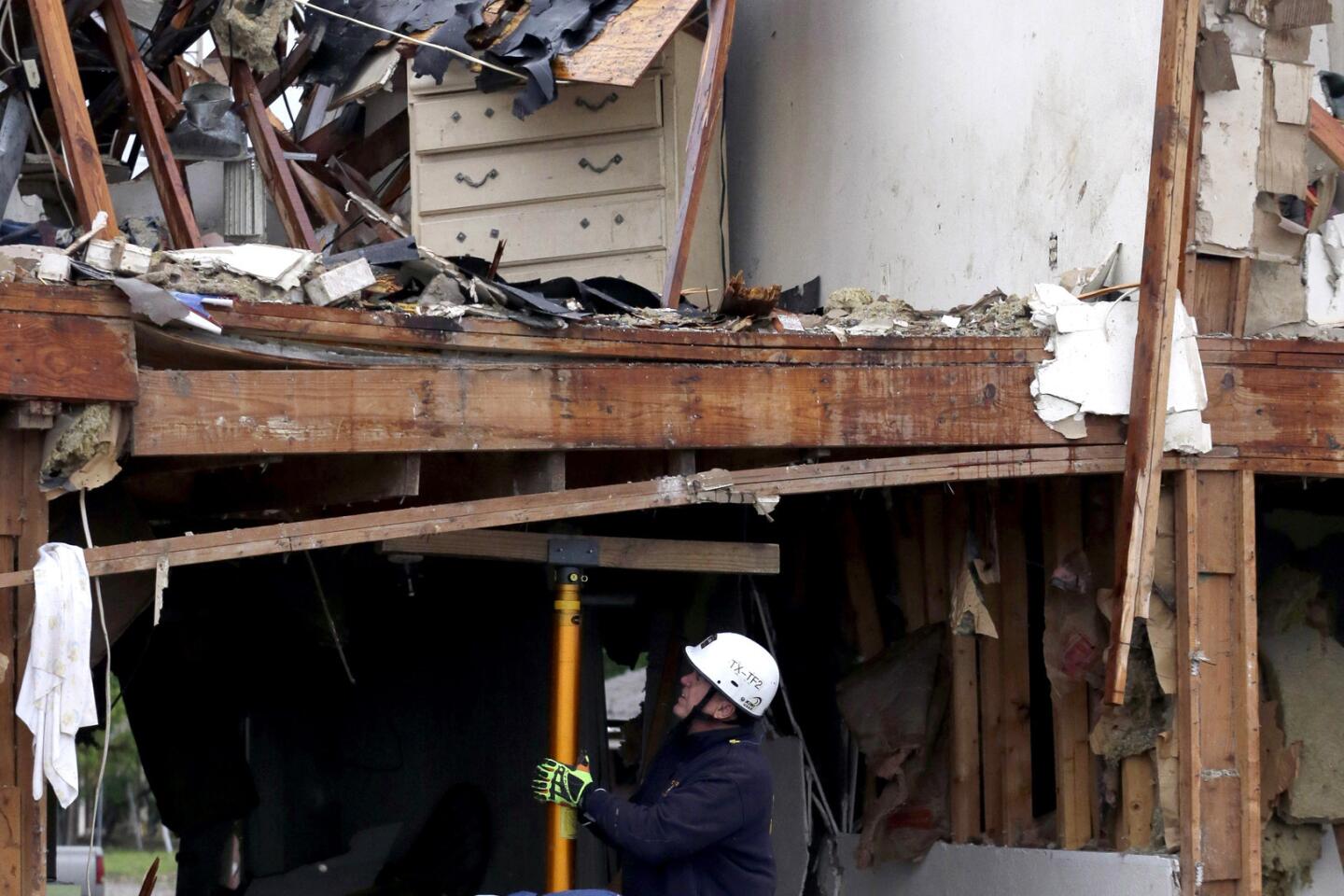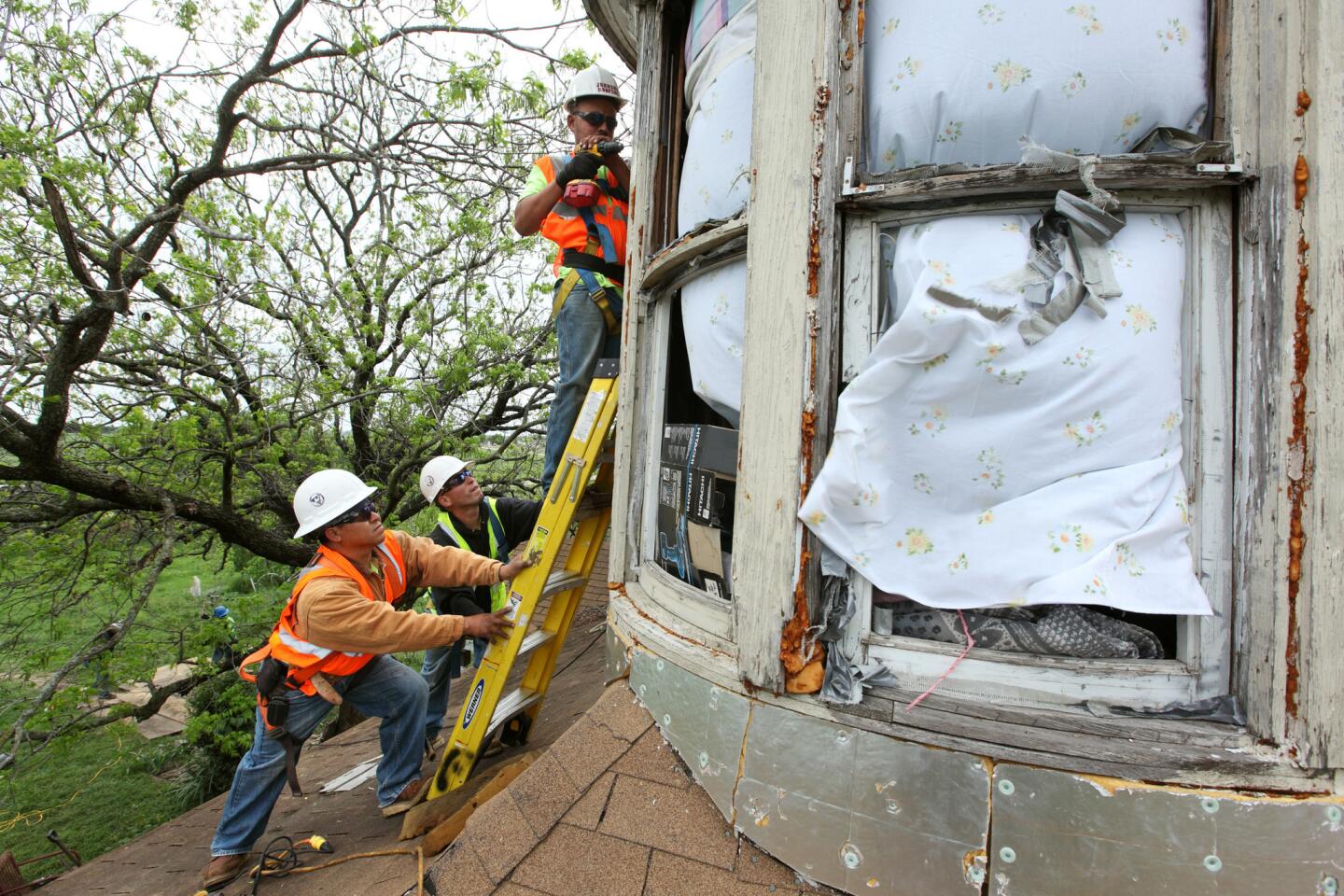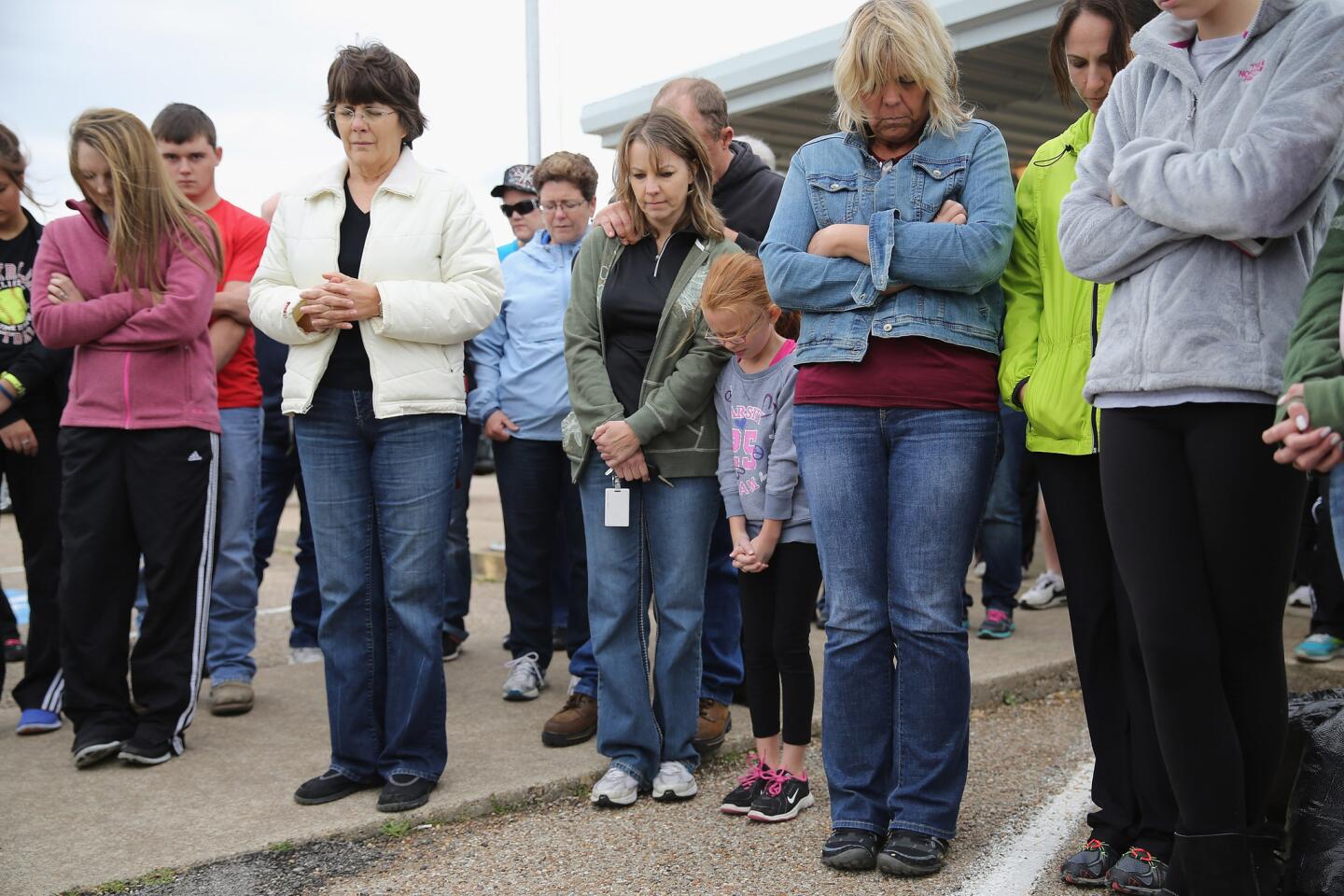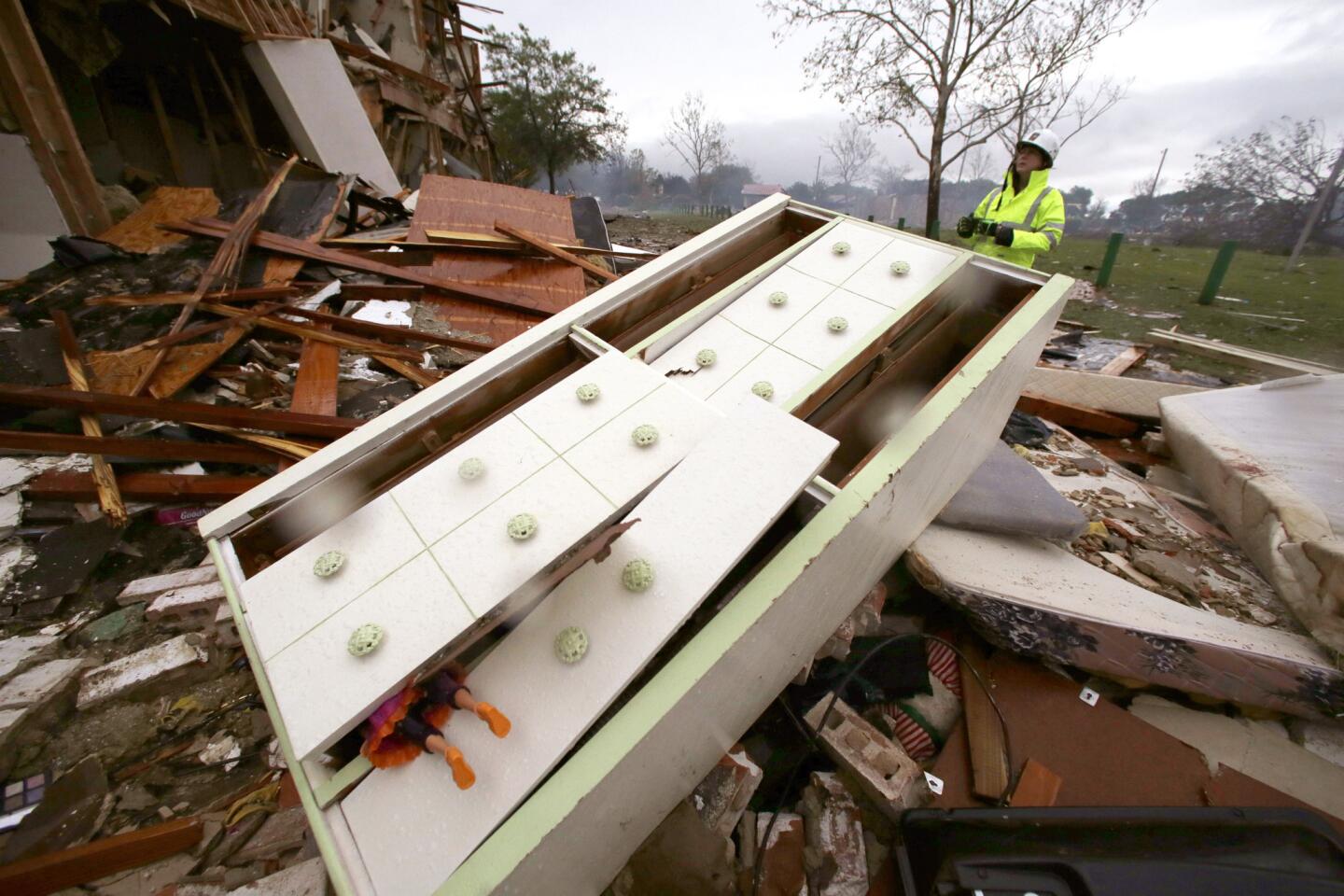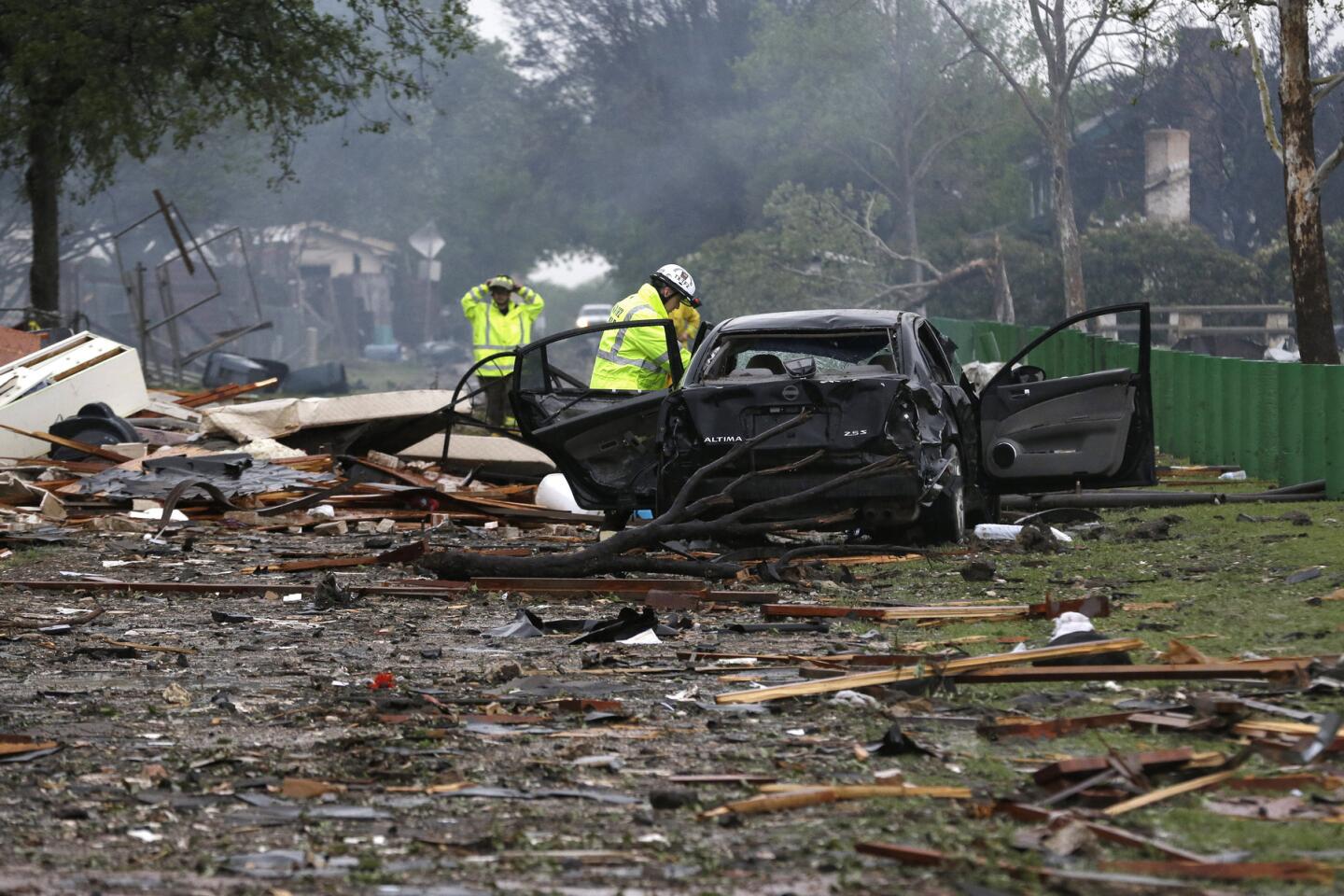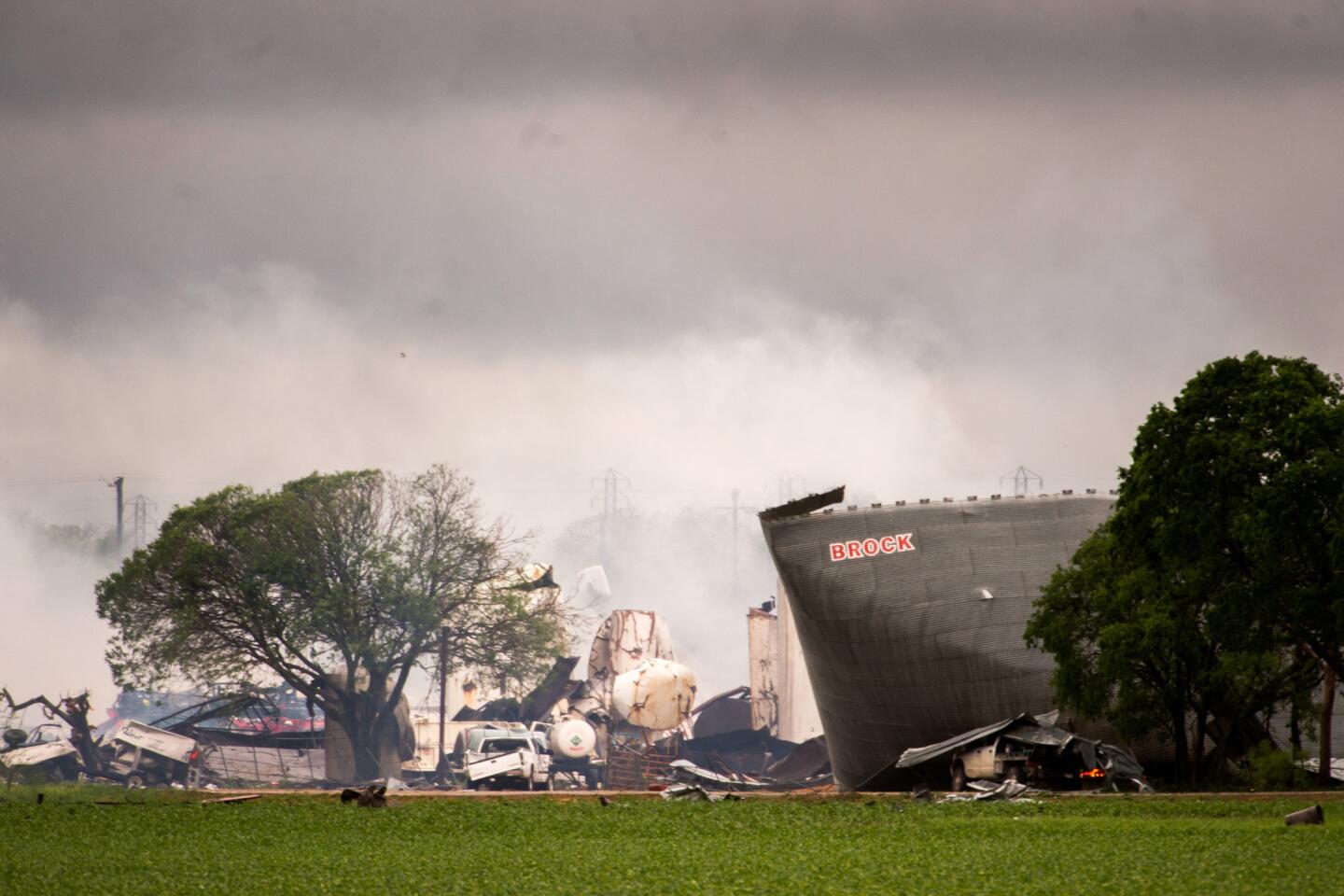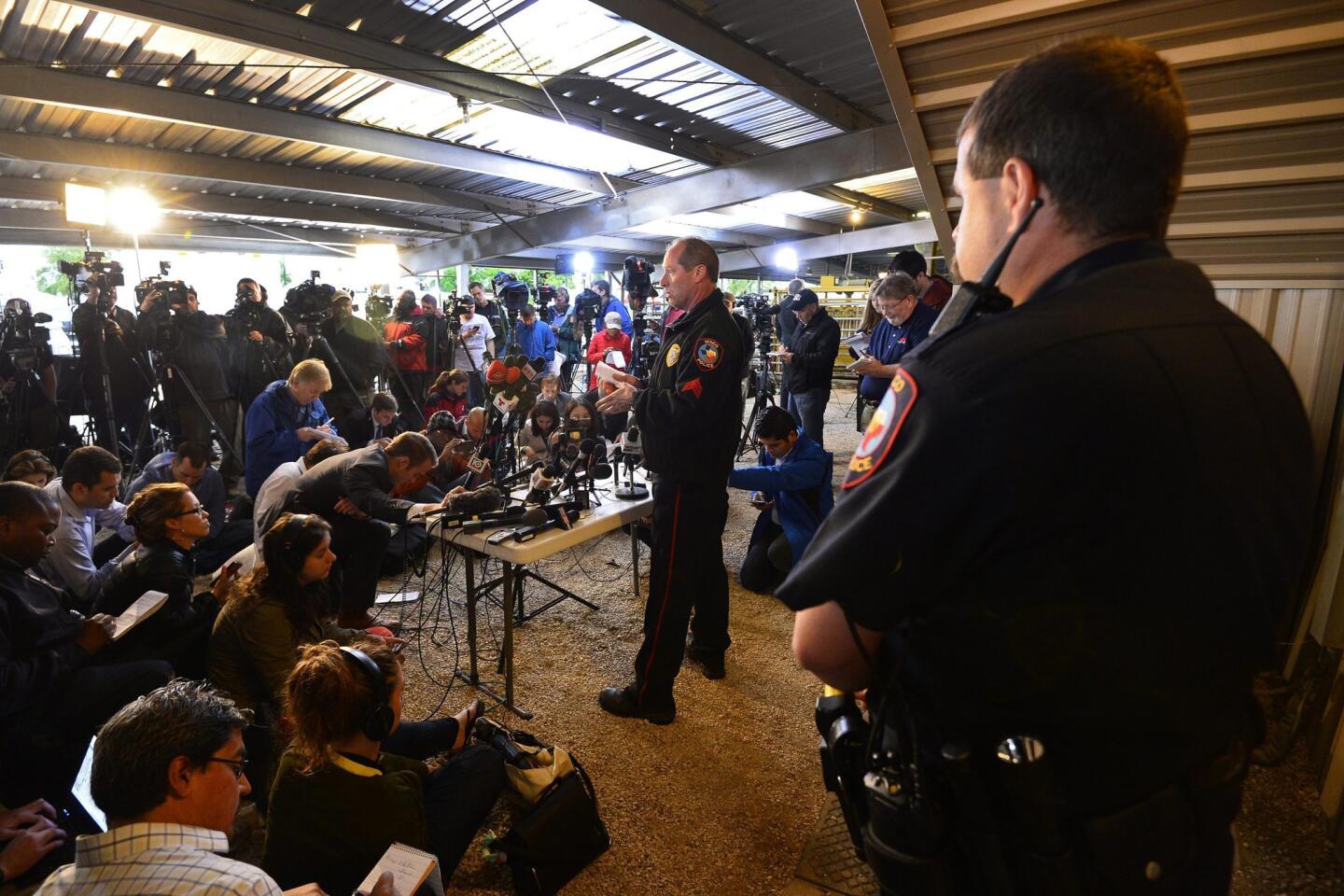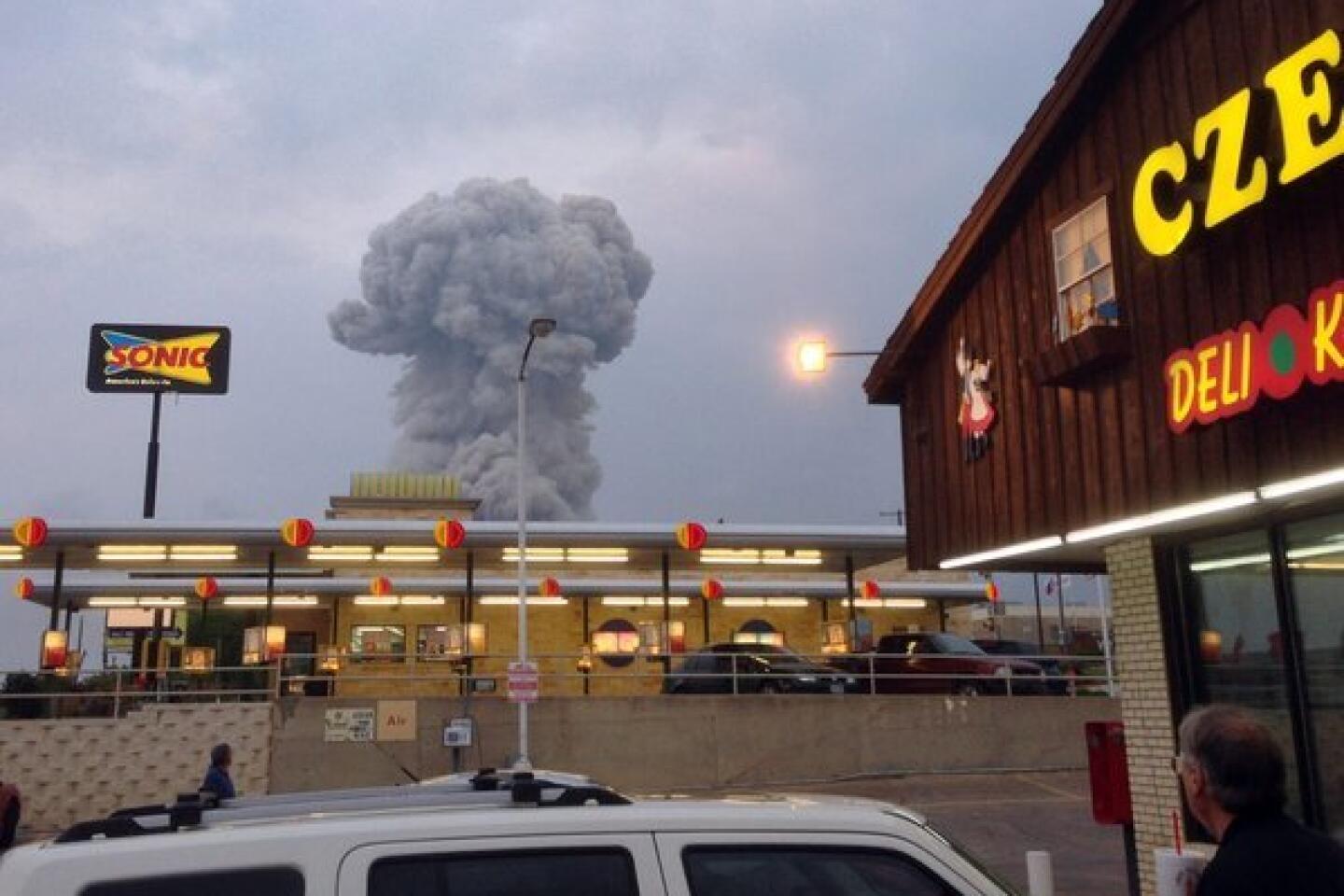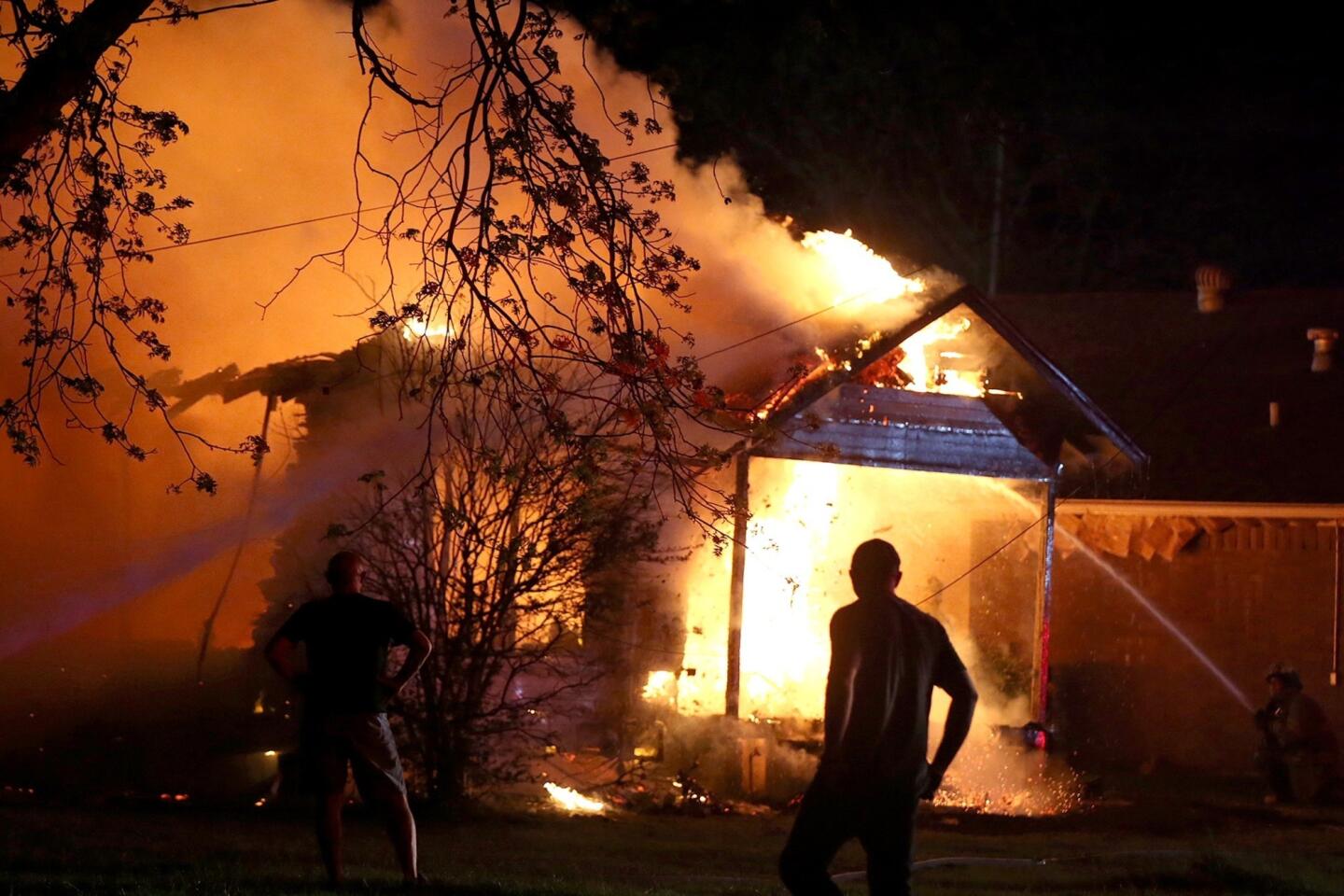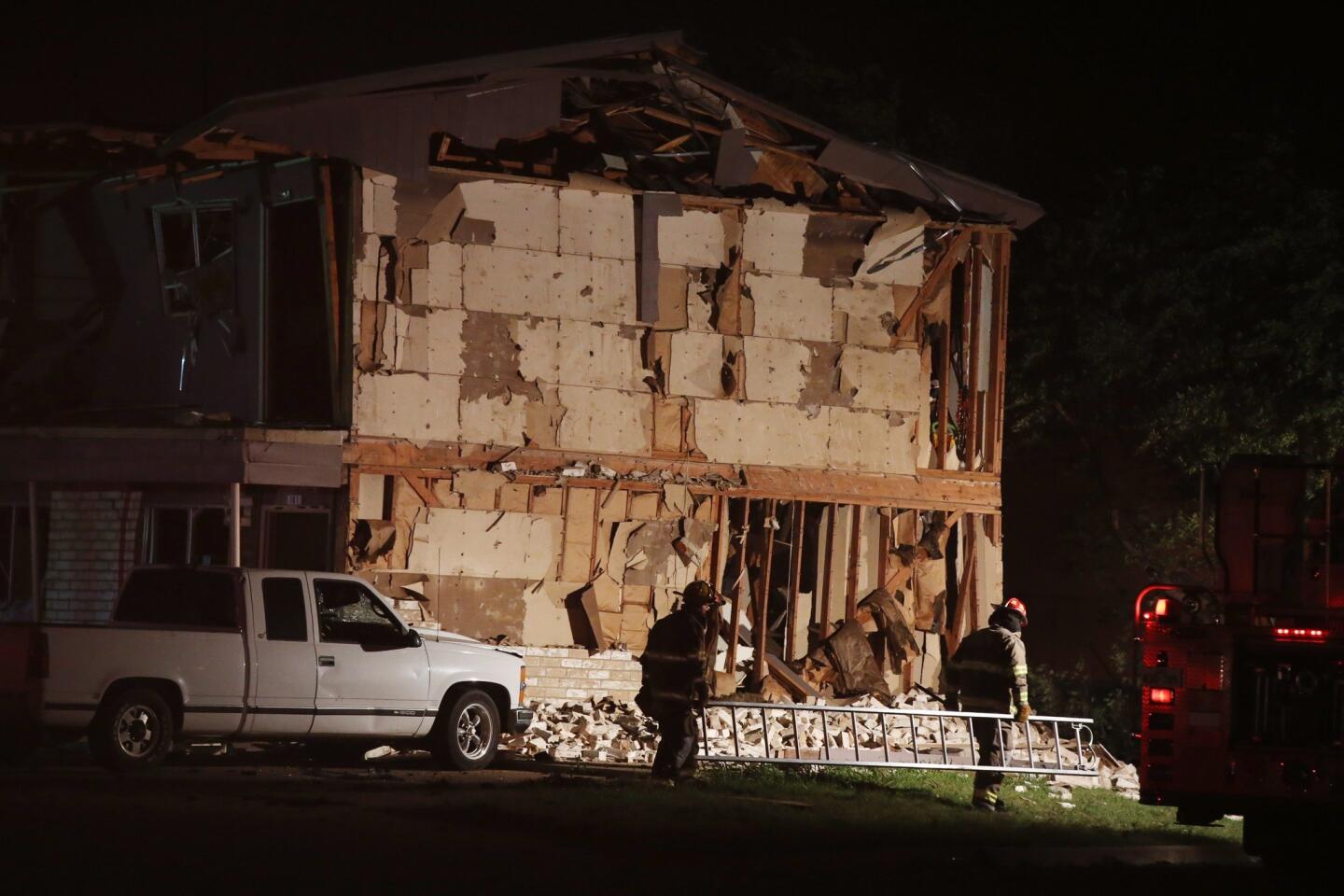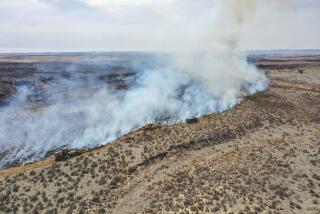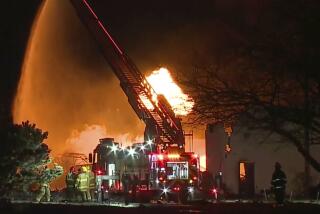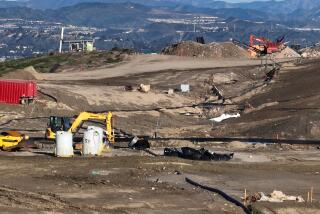West Fertilizer Co. fined $2,300 in 2006 for lack of safety plan
The West, Texas, fertilizer plant that exploded Wednesday was fined $2,300 in 2006 by the U.S. Environmental Protection Agency for not having a risk management program in place, records show.
West Fertilizer Co. settled with the environmental agency in August 2006 without admitting liability, according to records obtained by the Los Angeles Times.
The plant, described in regulatory filings as a storage facility, exploded Wednesday, flattening nearby homes and businesses. The blast left as many as 15 people dead and 160 wounded in the small, 2,800-resident town of West, 20 miles north of Waco.
PHOTOS: Fertilizer plant explodes in West, Texas
Massive rescue efforts were underway Thursday as officials combed through debris for survivors and bodies.
The plant, which was primarily used to store fertilizer, was also investigated in 2006 by the Texas Commission on Environmental Quality for a “very bad” smell, state records show.
That complaint was filed in June 2006, and it is unclear from documents what regulator actions were taken.
Officials wrote in the complaint that the “ammonia smell [was] very bad last night from fertilizer plant, [and] lingered until after they went to bed.”
The investigation was resolved and the company appeared to be cited for “failure to obtain a permit,” but records don’t indicate whether the plant’s owners faced a fine.
West Fertilizer Co. was founded in 1958, according to records obtained from Dun & Bradstreet, a business information firm.
The company, owned by Donald R. Adair, listed eight employees at the plant, which is described as a warehouse for nitrogenous fertilizers.
It reported annual sales of $4 million in 2012.
[Updated, 12:32 p.m. April 18: In its most recent risk management plan filing with the U.S. Environmental Protection Agency, West Fertilizer Co. officials said they had steps in place to prevent the accidental release of anhydrous ammonia.
The facility sold fertilizers directly to farmers, according to regulatory filings retrieved through a website run by the Center for Effective Government.
The safety plan, filed in June 2011, said the worst-case scenario would be “the release of the total contents of a storage tank released as a gas over 10 minutes.”
Filed by the company’s general manager, the risk management plan indicated there hadn’t been an accident at the warehouse facility in the last five years.
The filing also said that “based on the most likely potential incident,” an alternative release scenario would be “a release from a break in a transfer hose,” company officials wrote.
To prevent that, the facility had pressure relief valves in place.
“Safety improvement is an on-going process at the facility,” officials wrote.]
ALSO:
Fertilizer plant explodes near Waco, Texas
Rain hampers search for survivors of Texas explosion
West, Texas, explosion: Toxic cloud could be spread by strong winds
Los Angeles Times researcher Scott J. Wilson contributed to this report.
More to Read
Start your day right
Sign up for Essential California for news, features and recommendations from the L.A. Times and beyond in your inbox six days a week.
You may occasionally receive promotional content from the Los Angeles Times.

